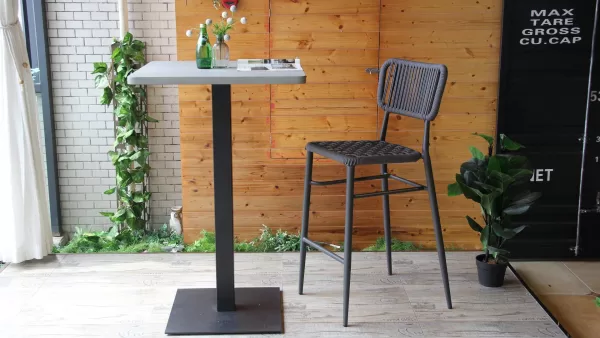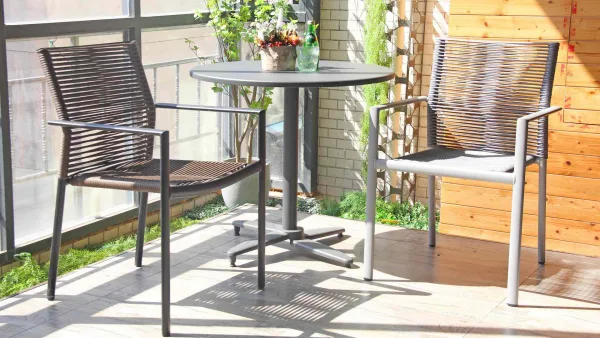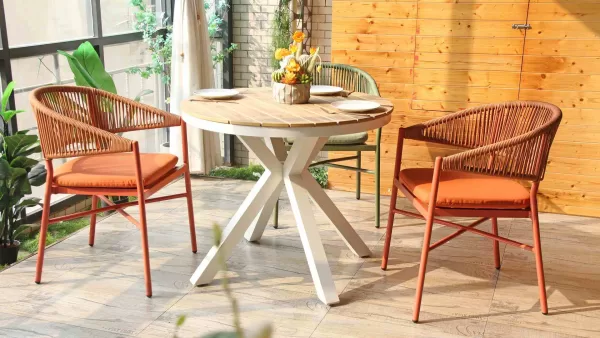- cdg01@cdgfurniture.com
- MP & WeChat & WhatsApp: +86-13926103331 (Ms. Lisa Liang)
LEAVE A MESSAGE
Contact CDG Furniture Manufacturer today to buy the perfect table and chairs, we can provide you with free designs and samples
The Art of Zen Gardens: Finding Peace Through Nature
When strolling through a serene garden filled with meticulously raked gravel, carefully placed rocks, and delicately pruned plants, one cannot help but feel a sense of tranquility wash over them. Zen gardens, also known as Japanese rock gardens or dry landscape gardens, are designed to evoke feelings of calmness, mindfulness, and serenity. Originating in Japan, these gardens have gained popularity worldwide for their minimalist yet profound beauty.
Creating a Zen garden requires attention to detail and a deep understanding of the principles behind this art form. The design typically includes elements such as rocks symbolizing mountains, raked gravel representing flowing water, and carefully chosen plants that add a touch of greenery to the landscape. The placement of each element is intentional, aiming to create a harmonious composition that invites contemplation and reflection.
The Origin and Philosophy of Zen Gardens
Zen gardens trace their roots back to the Zen Buddhist tradition, where they were used as places for meditation and contemplation. The act of tending to a Zen garden is considered a form of mindfulness practice, promoting focus, patience, and inner peace. Each element in the garden serves a symbolic purpose, encouraging visitors to connect with nature on a deeper level.
In traditional Zen gardens, the raked gravel represents water, with the patterns created resembling ripples or waves. This practice of raking, known as samon, is believed to have a calming effect on the mind and is often used as a form of meditation. The rocks, carefully placed throughout the garden, symbolize islands or mountains, evoking a sense of stability and endurance.
Designing Your Own Zen Garden
Creating a Zen garden in your backyard can be a rewarding experience that allows you to cultivate a space for relaxation and introspection. Start by selecting a peaceful location with minimal distractions, such as under a tree or beside a water feature. Clear the area and outline the shape of your garden using sand or chalk.
Next, choose your elements carefully. Rocks of varying sizes and shapes can be arranged to create focal points within the garden. Raked gravel or sand can be used to represent water, with patterns that mimic the natural flow of a river. Selecting plants that are easy to maintain and complement the overall aesthetic of the garden is essential.
Maintaining Your Zen Garden
Regular maintenance is key to preserving the beauty and tranquility of your Zen garden. Rake the gravel or sand periodically to maintain the patterns and promote a sense of calm. Prune and water your plants as needed, ensuring they remain healthy and vibrant. Take time to sit and contemplate the garden, allowing its peaceful energy to envelop you.
By immersing yourself in the timeless art of Zen gardens, you can create a sanctuary of peace and harmony in your own backyard. Whether you seek moments of quiet reflection or simply wish to enhance your connection with nature, a Zen garden is a true testament to the beauty of simplicity.
RECENT POSTS
- Hot Selling Outdoor Leisure Woven Rope Sofa Set
- What Is Special About Commercial Furniture ?
- A Comparative Guide to Rattan, Wicker, and Rope in Outdoor Furniture
- CDG Furniture Unveils Innovative Dining Spaces At The Furniture China
- Top Trends in Aluminum Garden Chair Designs for 2024
- The Advantages of Choosing Aluminum Garden Chairs for Your Outdoor Space
- How to Care for Your Aluminum Garden Chairs to Ensure Longevity
- Stylish Aluminum Garden Chairs- A Guide to Design and Functionality
- Mixing and Matching- Pairing Aluminum Garden Chairs with Other Outdoor Furniture
- Customizing Your Aluminum Garden Chairs- Colors, Cushions, and More













